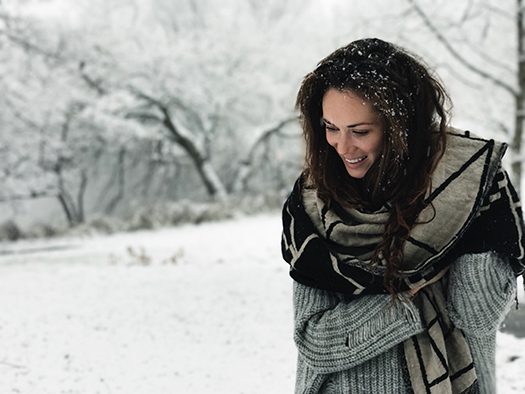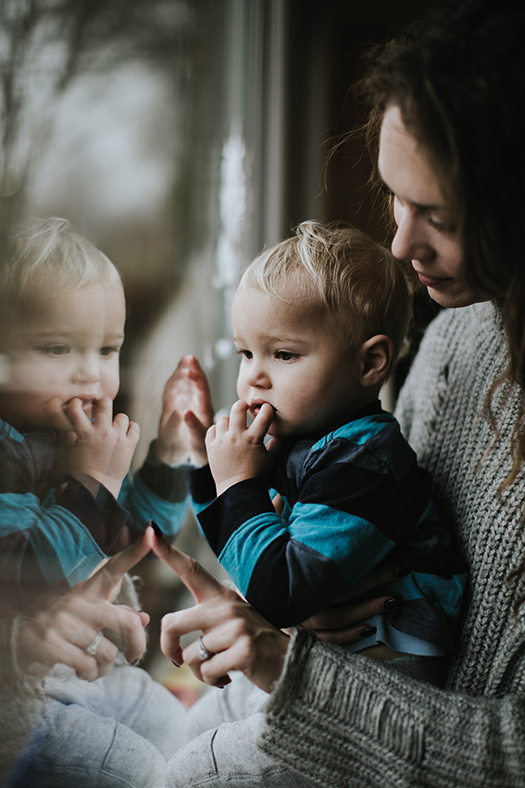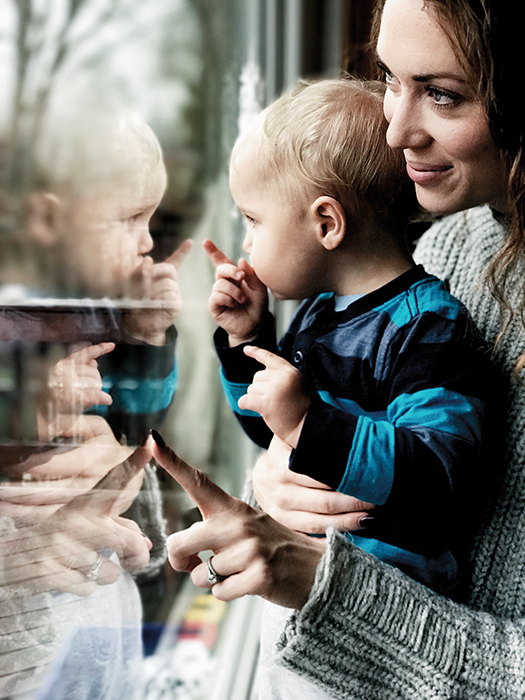In college, I’d often take the commuter train out of New York City right around rush hour. Countless times, I saw exhausted bridge-and-tunnel folks on their way out of town, wistfully looking out the window of the train as the sun set on the day. Finally freed from work, they were all mentally making plans for the night, the week or the year to come. The window light surrounded their faces so beautifully that whenever I’d ride with a friend, I’d recreate the scene, take out my flip phone and snap a portrait.
Sometimes the best—and most convenient—camera is the one you have in your hands. No matter how perfect the light and the subject are, if you don’t have an easily accessible camera, you’re not going to get the shot. That said, my flip phone circa 2004 was definitely not a camera.
My train portraits were inevitably blurry and pixelated. But in the past year, all that has changed.
Mobile photography today has finally taken the leap. With its vastly improved technology, I find I use the smartphone in my jacket pocket as an extra professional device, furthering our social media reach and filling in for shots when the trusty DSLR couldn’t make it out of the bag.
Even a year or two ago, I’d scoff at the prospect of a smartphone being used in any professional setting. The sensor was laughably small, the ability to have any manual control of the camera’s settings was nonexistent, and any photos I took on the thing just looked so flat and phone-y—pun totally intended. As apertures continue to get more open, as more apps are developed, as phones can now shoot in RAW and, finally, as Apple’s dual-lens technology strives to replicate the depth-of-field of DSLRs, mobile photography finally can be, dare I say, good.
So how can you kill it with a smartphone and actually use it like a pro-level camera?


Top: DSLR Photo Below: Iphone
All photos © Tim Sullivan
While you may be able to tell which photos were taken with a DSLR, those shot with the smartphone aren’t falling all that far behind. The top was shot with a Canon 5D Mark III and a 50mm f/1.2 lens, compared to the bottom which was taken using Portrait Mode on the iPhone 7+.
READ THE LIGHT
Light is light, and our ability to read it as photographers doesn’t change as you change the device in your hand. Too often, phones are used in the most inopportune lighting scenarios that even the greatest DSLR would struggle with.
Slow down and use the same rules when taking a photograph as you would in any scenario. Look for the bomb light, try not to confuse the white balance with different light temperatures and use the light, whether hard or soft, to your advantage.
DON’T RELY ON AUTO-EXPOSURE
Point your phone camera at any object and it will figure out some sort of exposure. All smartphone cameras worth their weight have the ability to change exposure.
Envision the photograph in your head first, rather than simply relying on what the phone screen tells you the shot should look like, and then use manual controls to make your vision of the photo come to life. Often it’s as simple as using your finger to slide up or down on the screen. Going a step further, many pro apps are available that will give you complete manual control over your camera.


Top: DSLR Below: Iphone
Similar to the other example, the top image was shot with a Canon 5D Mark III and a 50mm f/1.2 lens, while to the bottom was taken using Portrait Mode on the iPhone 7+.
GET EXCITED ABOUT DEPTH-OF-FIELD TECHNOLOGY
Whether it’s “Selective Focus” on Samsung Galaxy phones, “Lens Blur” on the Google Pixel or “Portrait Mode” on the iPhone7+, smartphones are beginning to digitally simulate bokeh in order to get a more pro-level look. How do they do it? As far as I can tell, magic sauce.
The iPhone7+ uses its dual-lens technology in tandem; the awesome 56mm portrait lens photographs the subject, and the 28mm lens photographs and blurs the background. The result is pretty darn legit-looking images. It’s not perfect—often a flyaway hair will look a little off, or the Champagne in your glass will be in focus while the glass itself will fade to the background—but when it gets it right, it gets it really right.
Mobile photography comes with its fair share of disadvantages, the biggest of which is the tiny sensor size. These shots are not meant to be blown up to Times Square size and no, I wouldn’t replace my DSLR with a camera phone to shoot an entire wedding, but I definitely find myself reaching for my phone to get behind-the-scenes shots and easily shareable images when on the road. If I follow the light, expose the way I envision, slow down, use the depth-of-field technology and edit tastefully, I now have a way of sharing professional images instantly to keep followers interested and surprise clients with a quick shot and edit that looks next level.
Tim Sullivan is one half of Sullivan & Sullivan, a wedding photography business he runs with his wife, Laura. The Sullivans were named Rf 30 Rising Stars of Wedding Photography in 2016.
THE EDITING APPS WORTH TRYING
Everything from controlling contrast to split toning is now available, with the fanciest of apps even allowing you to play with the tone curve. Before you settle for simply adding your “Sierra” filter and calling it a day, explore your options and start squashing those highlights yourself.
Filmborn by Mastin Labs
Mastin has hung its hat on making genuine film emulations for digital photography. You can set your display to shoot Portra or Fuji straight out of your phone’s camera. It has powerful editing tools that mimic what is available to film scanners as well as the ability to play with the tone curve.
VSCO
From the subtle to the heavy-handed, VSCO filters allow tons of creativity with your images. If I’m hoping to match some of my Lightroom presets to my phone, I turn to VSCO.
ProCam
ProCam allows you complete control of your camera. From ISO to shutter speed, burst mode to 3D photos, ProCam is a powerful tool to get more than just snapshots.
To read this article in the digital edition, click here.
Related: What It’s Like To Shoot A Wedding Entirely on an iPhone




